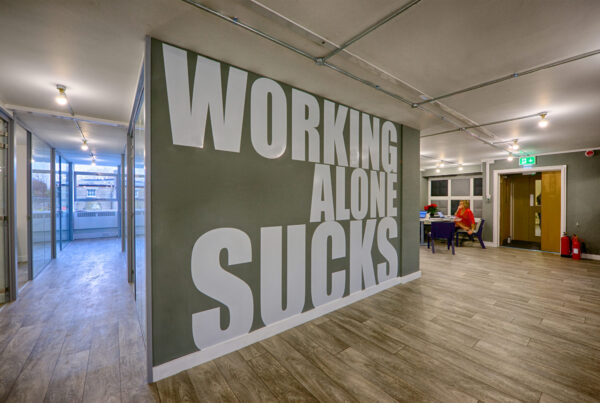What is a hub and spoke model?
The hub and spoke model shifts the focus away from traditional city centre offices and towards providing employees with professional workplaces closer to home. As predictions suggest that 40% of headquarters will downsize in the coming years, businesses are increasingly questioning what is truly essential. This period of change has allowed organisations to reconsider operations, from embracing remote working to prioritising employee wellbeing. Flexible working has emerged as a vital solution, offering endless bespoke options to suit companies’ evolving needs.
One solution that many businesses are turning to is the hub and spoke organisation design. This model arranges service delivery into a network centred around an anchor establishment – the hub – offering a full range of services, supported by secondary locations – the spokes -providing additional services. Although not a new idea, the hub and spoke model is regaining popularity with the rise of flexible working. Disruptions to the market have challenged the traditional view of office spaces, making businesses more open to alternative arrangements. Simply put, the hub is the main office, while spokes are smaller, strategically placed locations closer to employees’ homes.
Businesses of all sizes have long recognised the benefits of a decentralised approach. Now more than ever, it is time to embrace this model by implementing flexible solutions such as flexi office spaces. Whether you operate with a small team or a growing remote workforce, having access to adaptable workspaces offers valuable opportunities for collaboration, growth, and future expansion.
Does it work?
Successful implementation of the hub and spoke model depends on factors such as commute times, local amenities, public transport access around spoke offices, and maintaining employee wellbeing.
One understandable concern is how to preserve a cohesive team culture. Organisations must assess how critical physical presence is to their operations. If working together in-person daily is essential, the model may not be the best fit. However, if flexible arrangements are possible, businesses can benefit from improved team strength, higher satisfaction, and increased productivity. Research shows that employees based in flexible workspaces often experience greater job satisfaction and reduced stress levels.
While collaboration remains an important function of office life, escalating real estate costs and restricted space in major cities are encouraging businesses to think differently. Fixed lease offices are increasingly seen as limiting, particularly as remote working has proven to be just as effective across many industries. Without being tied to rigid contracts, businesses can scale operations more easily and respond to changing demands.
Where do flexible offices fit in?
City-centre offices can limit access to a broader talent pool. Not every skilled professional can manage long commutes, and businesses risk missing out on top talent if they remain inflexible. Studies from Capita reveal that 77% of businesses believe the lack of social interaction during remote working has negatively impacted employee wellbeing. Clearly, a balance is needed between home working and daily commutes.
Flexible working is now a key requirement for many jobseekers. Companies that embrace flexible office solutions will attract high-calibre candidates, while also benefiting from improved productivity, loyalty, and wellbeing across their existing teams.
For companies aiming to decentralise and grow, what is a hub and spoke model represents a smart way to expand their reach, nurture talent, and operate more profitably.
Flexible office spaces are critical to supporting this approach. Businesses no longer need to rely on a single provider or location; instead, they can build tailored networks of workspaces to fit their needs. Flexible workspace providers can often adapt to specific business requirements, recognising that no two organisations are the same.
What next?
Looking ahead, we can expect the hub and spoke model to become increasingly common. As flexible working continues to grow in importance, companies must adapt to attract top talent, prioritise employee wellbeing, and maintain competitiveness.
If you are considering how to future-proof your business, now is the time to explore how introducing a hub and spoke model could transform your operations.





